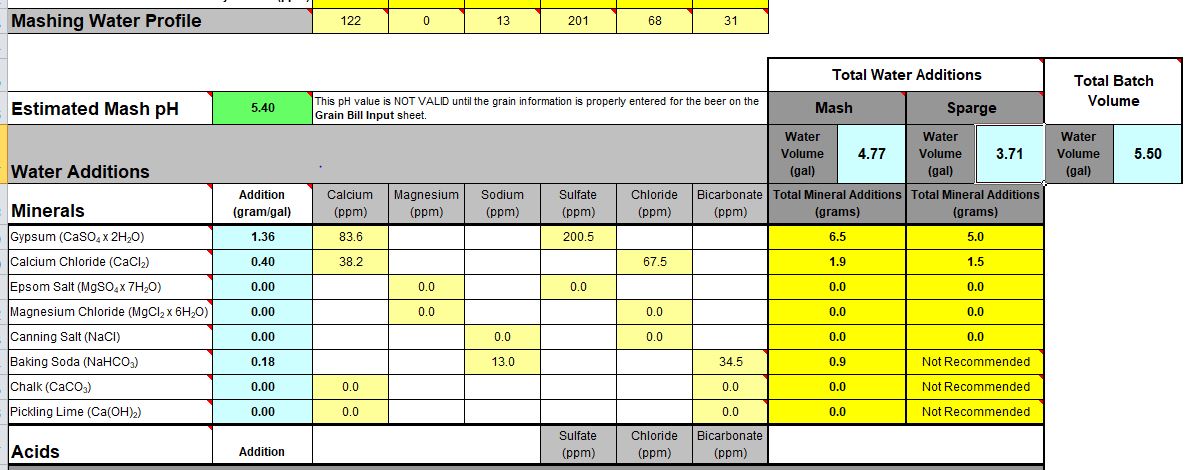Do explain. Malts acidify the mash especially dark ones, the amount of water will play a role in how much. 1 pound of malt will affect 1 gallon of water much more than it'll affect 10 gallons of water.
But the real question is how much will the fixed level of acidity of 1 Lb. of a truly incredibly dark and acidic malt affect 2 gallons of mash water as opposed to 1 gallon of mash water, which would be a simulation of a real world transition from sparging to going no-sparge?
Remember that pH is a base 10 logarithmic scale. And that a logarithm is an exponent. So the scale is exponential, and not linear. And we must deal with exponents....
Example:
If I take 1 gallon of pH 4.00 mash water (wort) solution (caused by adding 1 Lb. of the most incredibly acidic dark malt, which is in fact somewhat beyond imaginable) and dilute it with fully neutral deionized water until it is 10 gallons, its pH is now 5.00 due to the pH scale being log base 10.
10^-4 = 0.0001, and -log(0.0001) = 4 pH to start, wherein the exponent is 0.0001
Now dilute this wort 10-fold, and the exponent now becomes 0.00001, and therefore:
10^-5 = 0.00001, and -log(0.00001) = 5 pH (after diluting 1 gallon to 10 gallons)
But for the case of merely doubling 1 gallon of mash water to 2 gallons (as in going from sparge to no sparge) the exponent only changes from 0.0001 to 0.00009, so:
-log(0.0001) = 4.0000 pH initially for the case of 1 gallon + 1 lb. malt
-log(0.00009) = 4.0458 pH (for the case of diluting 1 gallon to 2 gallons)
and continuing on from there on up to a ten-fold dilution, we get:
-log(0.00008) = 4.0969 pH (for the case of diluting 1 gallon to 3 gallons)
-log(0.00007) = 4.1549 pH (for the case of diluting 1 gallon to 4 gallons)
-log(0.00006) = 4.2218 pH (for the case of diluting 1 gallon to 5 gallons)
-log(0.00005) = 4.3010 pH (for the case of diluting 1 gallon to 6 gallons)
-log(0.00004) = 4.3979 pH (for the case of diluting 1 gallon to 7 gallons)
-log(0.00003) = 4.5229 pH (for the case of diluting 1 gallon to 8 gallons)
-log(0.00002) = 4.6990 pH (for the case of diluting 1 gallon to 9 gallons)
-log(0.00001) = 5.0000 pH (for the case of diluting 1 gallon to 10 gallons)
Thus if we fully double the mash water the pH change with respect to a fixed quantity of acid for this example (and all others) is trivial, and would be quite hard to detect via pH meter. The change from pH 4.0000 to pH 4.0458 for the case of fully doubling the mash water volume is only 1.145%, and for nearly all practical purposes it can be discarded from consideration.



